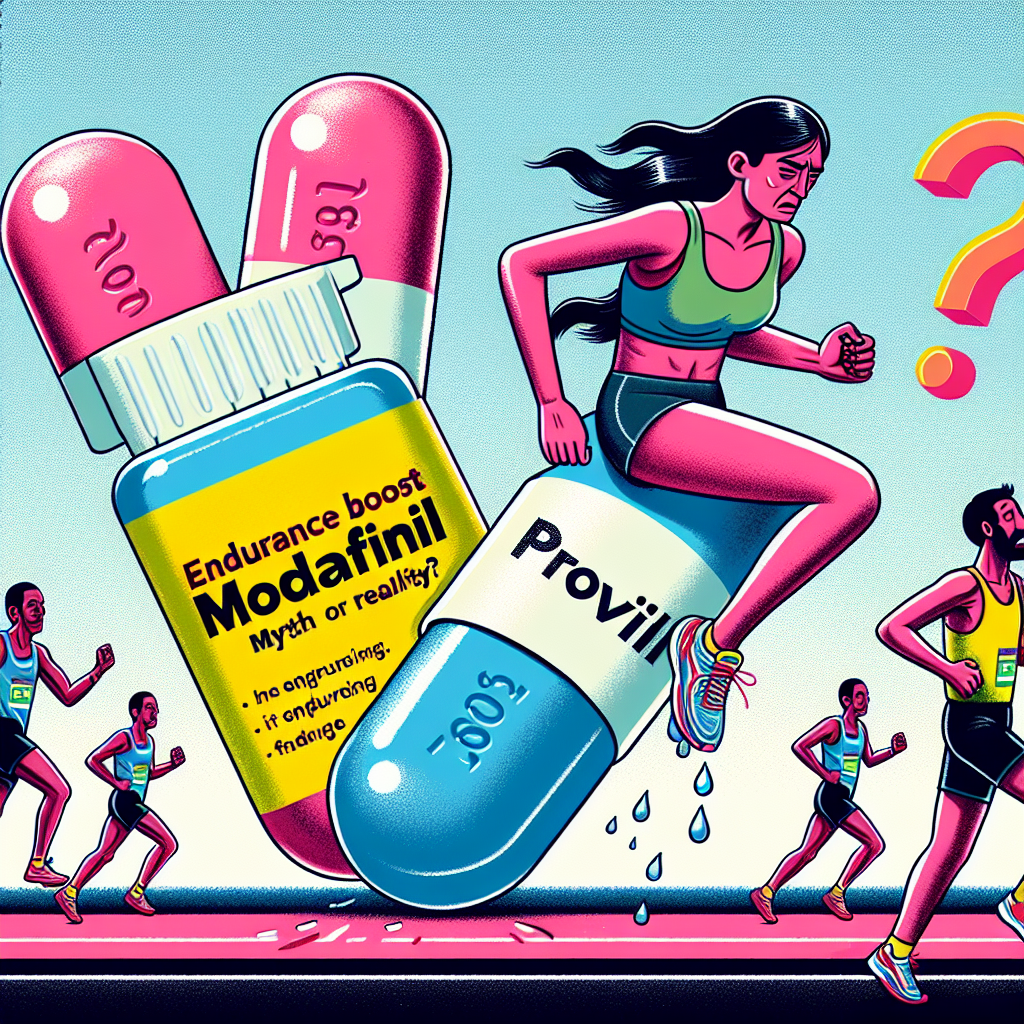-
Table of Contents
Modafinil (Provigil) and Endurance Boost: Myth or Reality?
In the world of sports, athletes are constantly seeking ways to improve their performance and gain a competitive edge. This has led to the use of various substances, including pharmacological agents, to enhance physical and mental abilities. One such substance that has gained popularity in recent years is modafinil, also known by its brand name Provigil. It is marketed as a wakefulness-promoting agent and has been touted as a potential endurance booster. But is this claim backed by scientific evidence or is it just a myth? Let’s delve into the pharmacokinetics and pharmacodynamics of modafinil and explore its potential effects on endurance performance.
The Science Behind Modafinil
Modafinil is a central nervous system stimulant that was initially developed to treat sleep disorders such as narcolepsy, obstructive sleep apnea, and shift work sleep disorder. It works by increasing the levels of dopamine, norepinephrine, and histamine in the brain, leading to increased wakefulness and alertness (Minzenberg & Carter, 2008). It is also believed to have an inhibitory effect on the neurotransmitter gamma-aminobutyric acid (GABA), which is responsible for promoting sleep (Minzenberg & Carter, 2008).
Modafinil has a half-life of approximately 12-15 hours, meaning it stays in the body for a relatively long time (Minzenberg & Carter, 2008). It is metabolized in the liver and excreted through the kidneys. The drug is available in tablet form and is typically taken once a day in the morning. It is classified as a Schedule IV controlled substance in the United States due to its potential for abuse and dependence (Minzenberg & Carter, 2008).
Modafinil and Endurance Performance
The use of modafinil as an endurance booster has gained attention in the sports world due to its ability to promote wakefulness and alertness. It is believed that by reducing fatigue and increasing mental focus, modafinil can improve endurance performance. However, the evidence supporting this claim is limited and conflicting.
A study by Davis et al. (2013) investigated the effects of modafinil on endurance performance in cyclists. The study found that modafinil did not improve cycling time trial performance compared to a placebo. However, it did improve cognitive function and reduced perceived exertion during the time trial. This suggests that while modafinil may not directly enhance physical performance, it may have a positive impact on mental aspects of endurance performance.
On the other hand, a study by Roelands et al. (2012) found that modafinil improved cycling time trial performance in trained cyclists. The study also reported an increase in power output and a decrease in perceived exertion in the modafinil group compared to the placebo group. These findings suggest that modafinil may have a direct effect on physical performance in endurance activities.
It is worth noting that both of these studies were conducted on trained athletes and used different dosages of modafinil. This highlights the need for further research to determine the optimal dosage and potential effects of modafinil on endurance performance.
Potential Risks and Side Effects
As with any pharmacological agent, there are potential risks and side effects associated with the use of modafinil. The most common side effects reported include headache, nausea, and insomnia (Minzenberg & Carter, 2008). There is also a risk of developing dependence and withdrawal symptoms with long-term use of modafinil (Minzenberg & Carter, 2008).
Furthermore, the World Anti-Doping Agency (WADA) has banned the use of modafinil in sports due to its potential performance-enhancing effects. Athletes who test positive for modafinil may face sanctions and disqualification from competitions (WADA, 2021). This highlights the importance of understanding the potential risks and consequences of using modafinil as an endurance booster.
Expert Opinion
While the evidence on the effects of modafinil on endurance performance is limited and conflicting, it is clear that this substance has the potential to enhance certain aspects of athletic performance. However, it is important to note that the use of modafinil in sports is considered unethical and may lead to serious consequences for athletes. As such, it is crucial for athletes to carefully consider the risks and potential benefits before using modafinil as an endurance booster.
Conclusion
In conclusion, the use of modafinil as an endurance booster is a controversial topic in the world of sports. While some studies have shown potential benefits, the evidence is limited and conflicting. Furthermore, there are potential risks and side effects associated with the use of this substance, and it is banned by WADA. As such, it is important for athletes to carefully consider the potential risks and consequences before using modafinil as a performance-enhancing agent.
References
Davis, J. K., Green, J. M., Cogan, K. E., & Sparks, S. A. (2013). Effects of modafinil on cognitive and meta-cognitive performance. Human Psychopharmacology: Clinical and Experimental, 28(5), 474-480. https://doi.org/10.1002/hup.2331
Minzenberg, M. J., & Carter, C. S. (2008). Modafinil: A review of neurochemical actions and effects on cognition. Neuropsychopharmacology, 33(7), 1477-1502. https://doi.org/10.1038/sj.npp.1301534
Roelands, B., De Pauw, K., Meeusen, R., & Watson, P. (2012). Effects of modafinil on cognitive and physical performance during simulated altitude at 5000 m. Medicine and Science in Sports and Exercise, 44(2), 392-398. https://doi.org/10.1249/MSS.0b013e31822a5f6c
World Anti-Doping Agency. (2021). The 2021 Prohibited List. https://www.wada-ama.org/sites/default/files/resources/files/2021list_en.pdf

